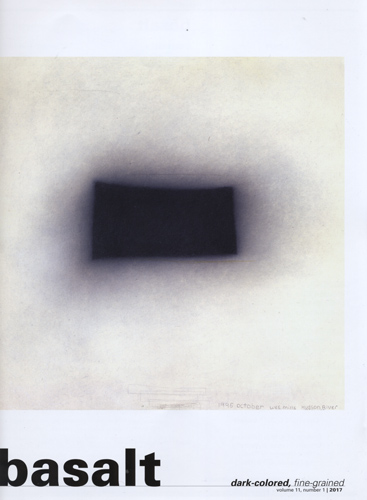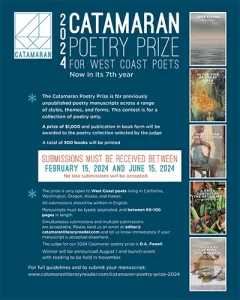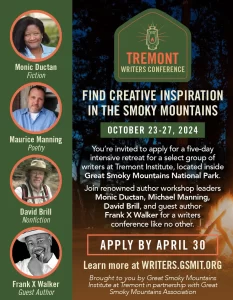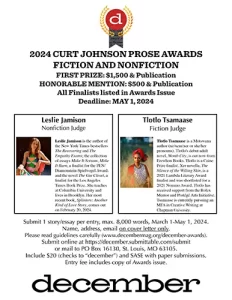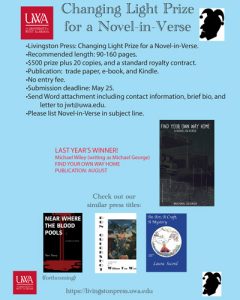Basalt – 2017
“Dark-colored, fine-grained,” reads the subtitle to basalt, the Oregonian journal named after the volcanic rock with those same dark, fine properties. Basalt is formed from surface lava cooling, and the poetry and art within the 2017 issue mimics its namesake, rising up as a strong finished product built from an eruption of words.
“Dark-colored, fine-grained,” reads the subtitle to basalt, the Oregonian journal named after the volcanic rock with those same dark, fine properties. Basalt is formed from surface lava cooling, and the poetry and art within the 2017 issue mimics its namesake, rising up as a strong finished product built from an eruption of words.
Ian Boyden greets readers with “A Forest of Names,” the introduction opening with:
In the 2008 Sichuan Earthquake, 5,196 schoolchildren were killed when their poorly-constructed schools collapsed. In an effort to conceal the corruption behind the schools’ construction, the government often brutally prevented parents and citizens alike from procuring the facts of who died, how many, and why.
Chinese artist Ai Weiwei risked his safety to find out the identities of the deceased children. Boyden then hung scrolls of the names at an exhibition of Ai Weiwei’s work, leading him to provide informal translations of these names into lines of poetry honoring the lives they were assigned to. In the selection of names, each is accompanied by the child’s birthday, the Chinese character for their name, the English translation, and Boyden’s poetry translation, which are poignant reflections on the lives lost. Boyden gives a voice to those who were denied the dignity of having their truths told.
Heather Swan explores losses versus gains in the poem “In Which I Begin to Bargain.” Working down a list of bargaining, Swan acknowledges the damage we do—and that the speaker herself partakes in—to the resources, animals, and humans around us:
for my insecticide, the songbird’s eggs, the butterflies, the bees
[ . . . ]
for my mascara, the rabbits, the mice
and for my smartphone, Congo
for my blue jeans, the seamstresses, and their eyes, their children, their hands
While these are things we are all aware we are responsible for, Swan brings them all together in one place, forcing us to acknowledge and reevaluate our use of the planet. We are left considering whether these luxuries are worth what we trade for them.
Two poems by Theresa Hamman are among my favorites this issue. The first, “It’s a Waste of Magic to Wish Someone Dead,” keeps coming back to a window and the window seat, the frost of autumn clinging to the imagery. Loss finds its way into the verses—an unraveling sweater, dates shriveled in the apple bowl, ripe cherries plucked away by birds, fading paint—while stirring memories of fall, the ghosts seeming louder in that season as they try to speak to us.
Hamman’s second poem “Pretty Flames All in a Row” brings us into the speaker’s morning “sick with hangover / and rain,” the images damp and hazy. Motorcycles roar through the poem, first in a news report, again driving by after “evening / eases into night like a sleepy cat,” then finally again at the entrance of Clyde’s Biker Bar, “the hogs lined up, / pretty flames all in a row.” The poem felt palpable, like I was standing inside it. Perhaps it’s because I read this poem on a sleepy, rainy day as traffic noises thundered through my open windows, or perhaps it’s Hamman’s expertise in shaping images and bringing them to life. Either way, both Hamman’s poems haunted me after reading.
There’s something hazy and haunting about the art in this issue too, all by Wes Mills, a selection of his work introduced by Robert Stubblefield and discussed by Kerri Rosenstein. Mills’s art uses empty space and blurry darkness, the pieces giving a muffled feel that draws viewers in, especially the cover art, “Hudson River” (1995), a dark rectangle that almost seems like it’s swallowing readers into the 2017 issue.
Like its namesake, this issue of basalt builds up, providing readers with a final product of finely-crafted writing and art.
[www.eou.edu/basalt]

